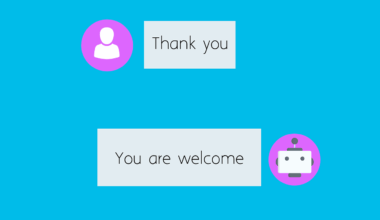Using Data Analytics to Improve Segmentation in Loyalty Programs
Understanding your customers is vital for enhancing loyalty programs. Data analytics enables businesses to analyze vast datasets to discern patterns and preferences of customers. This insightful analysis assures that the segmentation process is more effective and tailored. Utilizing data enables companies to recognize their high-value customers, leading to improved targeting. Through advanced analytics, businesses can ensure segmentation is based on behavior rather than just demographics. This deeper understanding allows for personalized communication tailored to customers’ habits and preferences. In practice, by measuring customer interactions, companies can determine specific traits of various customer segments, from purchasing behavior to loyalty tendencies. Implementing these findings is essential to ensuring the loyalty program remains relevant and appealing. This leads to increased satisfaction and improved retention rates, as customers feel valued and understood. Companies leveraging data analytics can continuously adapt their strategies to meet evolving customer expectations, ensuring long-term loyalty. Ultimately, efficient segmentation backed by proven analytics leads to more successful loyalty programs, resulting in increased revenue and stronger customer relationships.
Data analytics not only enables businesses to segment their customers more effectively but also aids in creating targeted marketing campaigns. Traditional marketing approaches often cast a wide net, leading to inefficient resource allocation. However, with accurate data segmentation, businesses can focus their efforts where they matter most. By creating personalized marketing messages, companies can target the distinct needs and preferences of each customer segment. For instance, sending specific offers to repeat customers can nurture loyalty while prioritizing new customers with enticing welcome discounts. Moreover, loyalty programs can be designed to reward behaviors that align with business goals. Businesses should leverage insights gathered from data analytics to create optimal rewards systems. When customers feel that the rewards are tailored to their interests, they are more likely to engage. Additionally, regular evaluation of customer data is crucial, facilitating adjustments to enhance program effectiveness. Continually analyzing customer preferences allows companies to innovate and refresh their loyalty offerings, keeping satisfaction levels high. Ultimately, the goal is to cultivate long-lasting relationships, turning loyal customers into brand advocates who will share their positive experiences.
Improving Customer Experience
Moreover, integrating data analytics into loyalty programs significantly improves the customer experience. A seamless relationship between the consumer and the brand is achieved when companies utilize insights to anticipate customer needs. For instance, when customers receive personalized recommendations based on their previous interactions, it shows that the brand understands them. This fosters trust and strengthens the loyalty bond. Companies can refine their communication strategies to match customer preferences, such as frequency and preferred channels, enhancing overall satisfaction. Proactively engaging customers using data, not only enhances their experience but also minimizes negative feelings about unsolicited marketing. Brands that utilize customer feedback through analytics can continuously refine their programs to ensure they remain relevant and appealing. Being attuned to customer sentiments allows businesses to resolve issues swiftly, further solidifying loyalty. As a result, customers are not only likely to return but also recommend the brand to peers. Data analytics creatively explores customer motivations, enabling brands to create memorable interactions. In the competitive landscape, brands that prioritize customer experience will invariably lead; analytics serves as a compass guiding towards this success.
Implementing the right technology is crucial for effectively utilizing data analytics in loyalty programs. Businesses need a robust system to collect, analyze, and interpret customer data accurately. Investing in customer relationship management (CRM) or loyalty management platforms that offer analytics capabilities can yield valuable insights. These tools should integrate seamlessly with existing systems to provide an organized view of customer interactions and feedback. Effective systems can process vast amounts of data, revealing critical insights like purchasing frequency, preferences, and rates of participation in loyalty programs. To leverage these insights fully, organizations must train their staff in data interpretation and utilization. Ensuring your team understands analytical tools can significantly enhance the program’s outcomes. Companies should regularly update their systems to include the latest analytic features and methodologies, providing customer insights in real-time. Staying ahead in analytics is essential to rapidly adapt to market changes and shifting customer preferences. Ultimately, investing in the right technology equips brands with the necessary resources to make informed, data-driven decisions that elevate their loyalty programs.
Challenges and Solutions
Despite the benefits, integrating data analytics into loyalty programs comes with challenges. Data privacy concerns have become paramount as customers grow increasingly wary of how their data is used. Companies must prioritize ethical data usage by implementing transparent privacy policies. Customers should be informed about data collection practices and have options to opt-in or out. Balancing personalization with privacy is a delicate task; however, it’s essential for maintaining trust and credibility in loyalty programs. Furthermore, businesses may struggle with data silos, where different systems store isolated information, resulting in incomplete customer profiles. Investing in integrated solutions can address this issue, enhancing the overall effectiveness of loyalty programs. Another challenge is ensuring the ongoing accuracy of the data analyzed. Companies must develop a regular data maintenance process to ensure relevance. Engaging with a trusted analytics partner can also aid in navigating around these challenges. Ultimately, addressing these obstacles straightforwardly ensures that brands can derive actionable insights from analytics, leading to improved segmentation strategies in loyalty programs.
Continuous improvement should be a core principle for any loyalty program. Regularly analyzing data allows companies to gain insights into customer behaviors and program effectiveness. Organizations can implement A/B testing to compare different strategies or rewards to identify which methods resonate with customers. For instance, testing various offerings or communication styles can provide an idea of what increases engagement. Feedback loops established through customer surveys can also inform program improvements. By soliciting opinions about current rewards and communication effectiveness, brands can modify components to enhance their programs. Additionally, evaluating the competition helps companies innovate and remain relevant. Understanding what competitors offer can provide inspiration for new initiatives and the loyalty program may require adaptations. This kind of benchmarking helps maintain market competitiveness while ensuring customer satisfaction. As trends shift, businesses need to be agile in their responses, requiring an ongoing commitment to adjustments. To foster long-lasting loyalty, a program must adapt continuously, aligning with evolving customer expectations. This leads to sustained engagement and a propensity for customers to advocate for the brand.
Conclusion
In conclusion, utilizing data analytics to improve segmentation in loyalty programs is essential for fostering customer engagement. By leveraging insights from consumer behavior, businesses can craft targeted marketing strategies that increase participation and loyalty. The customization of rewards and communications based on customer data makes them feel valued. As loyalty programs evolve, they must adapt to changing consumer needs driven by analytics. The importance of robust data collection and analytic tools cannot be overstated; the appropriate technology enables businesses to derive actionable insights effectively. Brands must remain vigilant regarding privacy regulations and ensure transparent practices to maintain consumer trust. Challenges, while existent, can be positively addressed through integrated systems and an ongoing commitment to data accuracy. Engaging customers continuously through feedback and market evaluations facilitates lasting relationships. As businesses work to improve their loyalty programs through analytics, they must prioritize agility and responsiveness to customers’ feedback. This forward-thinking approach ultimately results in loyalty programs that resonate with customers, leading to sustainable business growth and enhanced advocacy.
Overall, the successful implementation of data analytics strategies directly correlates with a brand’s capability to nurture customer loyalty effectively. The alignment between data-driven decision-making and understanding customer preferences sets apart successful loyalty programs from failures. Organizations embracing technology innovation and analytics will witness a stronger connection with their customers, ensuring longevity in brand loyalty and customer satisfaction. As competition becomes more fierce in numerous industries, leveraging analytics is no longer an option but a necessity for brand survival. Firms that prioritize the integration of data insights into their loyalty programs will be well-equipped for the future. Continuous evaluation, feedback loops, and an unwavering commitment to meeting consumer needs will foster a robust loyalty framework. This framework will not only retain customers but also expand their engagement and satisfaction levels. Ultimately, as customer dynamics evolve, so too must the loyalty strategies that companies implement. By staying steadfastly focused on using data to inform and enhance customer engagement, businesses can build loyalty programs that thrive, thereby ensuring their relevance in a growing market.


